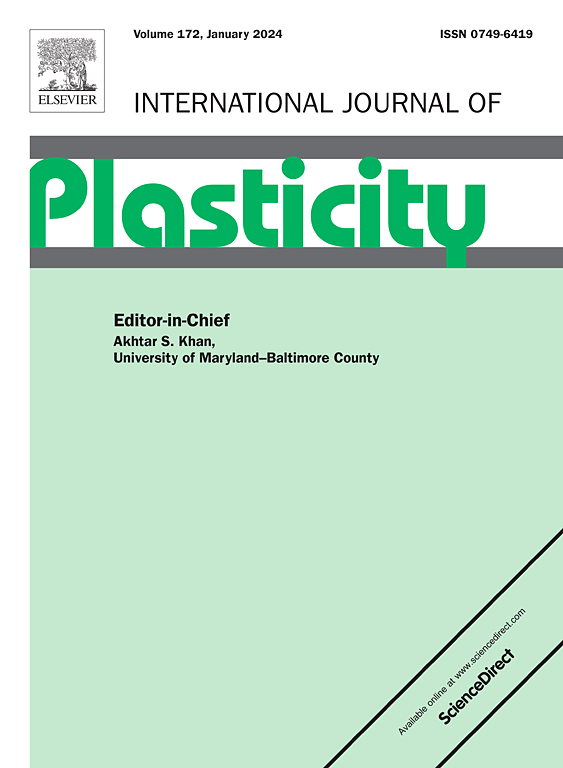High-performance medium Mn steels with expanded processing windows enabled by rapid austenite reversion
IF 12.8
1区 材料科学
Q1 ENGINEERING, MECHANICAL
引用次数: 0
Abstract
Medium Mn steels (MMnS) with high strength and large ductility are desirable for constructing structural components, and multiple plasticity carriers are indispensable for high-performance MMnS. The key to invoking collective deformation mechanisms is the proper tuning of austenite characteristics through the intercritical annealing process. However, since other metallurgical features are also impacted by intercritical annealing both kinetically and thermodynamically, MMnS are sensitive to minor variations of annealing conditions and plagued by narrow thermo-mechanical processing windows. To overcome this limitation, we propose a high-temperature pre-annealing (HA) strategy that enables strong and ductile MMnS across broad ranges of annealing temperature and duration. The HA process facilitates austenite reversion by enhancing nucleation sites and elemental pipe diffusion through dislocations, enabling austenite fractions exceeding the values predicted by thermodynamic equilibrium. Consequently, superior and stable mechanical properties with yield strength of ∼1200 MPa and ductility up to 50% are achieved. Multi-scale characterizations reveal that this exceptional ductility stems from hierarchical austenite with graded mechanical stability and synergistic activation of plasticity mechanisms—martensitic transformation, dislocation glide, deformation twinning, and stacking faults—to mitigate strain localization. In contrast, the same MMnS without HA process exhibits inferior tensile properties and a strong dependence on annealing conditions. Our findings underscore the capability of the HA strategy to decouple mechanical performance from precise processing control, offering a scalable pathway for industrial-scale production of high-performance MMnS.

高性能中锰钢,通过快速奥氏体还原,扩展了加工窗口
高强度、大延展性的中锰钢是构造结构构件的理想材料,而多种塑性载体是高性能中锰钢不可缺少的。激活集体变形机制的关键是通过临界间退火过程对奥氏体特征进行适当的调整。然而,由于其他冶金特征也受到临界间退火的动力学和热力学影响,MMnS对退火条件的微小变化很敏感,并且受到狭窄的热机械加工窗口的困扰。为了克服这一限制,我们提出了一种高温预退火(HA)策略,使MMnS在广泛的退火温度和持续时间范围内具有强韧性。HA过程通过强化成核位点和元素通过位错扩散来促进奥氏体的还原,使奥氏体分数超过热力学平衡预测的值。因此,该材料具有优越而稳定的机械性能,屈服强度可达1200兆帕,延展性可达50%。多尺度表征表明,这种特殊的延展性源于分层奥氏体,具有渐变的机械稳定性和塑性机制的协同激活——马氏体相变、位错滑动、变形孪晶和堆积断层——以减轻应变局部化。相比之下,未经HA处理的相同MMnS表现出较差的拉伸性能,并且对退火条件有很强的依赖性。我们的研究结果强调了HA策略将机械性能与精确加工控制分离的能力,为高性能MMnS的工业规模生产提供了可扩展的途径。
本文章由计算机程序翻译,如有差异,请以英文原文为准。
求助全文
约1分钟内获得全文
求助全文
来源期刊

International Journal of Plasticity
工程技术-材料科学:综合
CiteScore
15.30
自引率
26.50%
发文量
256
审稿时长
46 days
期刊介绍:
International Journal of Plasticity aims to present original research encompassing all facets of plastic deformation, damage, and fracture behavior in both isotropic and anisotropic solids. This includes exploring the thermodynamics of plasticity and fracture, continuum theory, and macroscopic as well as microscopic phenomena.
Topics of interest span the plastic behavior of single crystals and polycrystalline metals, ceramics, rocks, soils, composites, nanocrystalline and microelectronics materials, shape memory alloys, ferroelectric ceramics, thin films, and polymers. Additionally, the journal covers plasticity aspects of failure and fracture mechanics. Contributions involving significant experimental, numerical, or theoretical advancements that enhance the understanding of the plastic behavior of solids are particularly valued. Papers addressing the modeling of finite nonlinear elastic deformation, bearing similarities to the modeling of plastic deformation, are also welcomed.
 求助内容:
求助内容: 应助结果提醒方式:
应助结果提醒方式:


